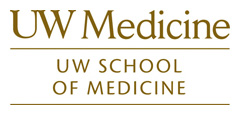Alaska Track FAQs
-
Why did you choose the Alaska Track?
There are many reasons! The track balances world-class inpatient and specialty experiences in Seattle with diverse primary care opportunities in both rural and urban Alaskan and Native Alaskan communities. We were also interested in working in an environment where limited access to certain specialty health services would challenge us to think creatively about providing quality care to children and their families. Lastly, we were all excited about the adventure of living in the beautiful state of Alaska.back to top
-
What unique training experiences does the Alaska Track offer?
Among the many wonderful things we've done, some of our favorites include serving as pediatric consultants during village and regional clinic trips, responding to radio medical traffic calls, joining medevac teams on patient transport flights and working in primary care clinics within both the Alaska Tribal Health System and local private health care systems.back to top
-
What are some of the challenges to participating in the Alaska Track?
Similar to any residency program, there are aspects of the Alaska Track that some participants may find challenging. These include moving back and forth among multiple cities throughout residency, occasionally spending time working in remote places far away from life’s modern conveniences and the possibility of being an extra time zone or flight away from family and friends in the lower 48. Although these realities exist, we have found them manageable through advanced planning and the support and flexibility of the residency program.back to top
-
Do you have to commit to working in primary care after residency in order to apply for the track? What about committing to working in Alaska?
No, on both counts. We are looking for applicants who are excited about the opportunity to train in Alaska and experience more primary care training, and who have an interest in serving rural communities. We realize that it is not reasonable to expect applicants to know exactly what they want to do after residency or commit to practicing in a certain setting or specialty. Our goal is to provide a well-rounded training experience that will prepare residents to practice in a variety of locations and settings and in whichever specialty will best fit their future career, while also hopefully sparking interest in practicing in communities within the larger WWAMI (Washington, Wyoming, Alaska, Montana and Idaho) region.back to top
-
How are you connected to the categorical program back in Seattle?
The Alaska Track is a primary care track of the three-year categorical pediatric residency program. Members of the categorical program, the Alaska Track and various other pathways all function as one cohesive residency class – both inside and outside of the clinical setting. When we work in Seattle together, we perform the same roles. The main difference is that those of us in the Alaska Track spend four months per residency year (end of first year, middle of second year and beginning of third year) in Alaska focusing on primary care training experiences.back to top
-
How does all of the extra primary care training fit into the residency schedule?
The Alaska Track is designed to both maximize primary care training and meet the standard ACGME pediatric residency requirements. In order to fit everything into a three-year residency schedule, the primary care training (community pediatrics, continuity clinic, WWAMI rotations) that our categorical counterparts usually experience in Seattle and the WWAMI region are instead incorporated into our Alaska time. In addition, we have slightly less emergency room coverage, and our elective time is focused on the tier one and two core electives.back to top
-
What do you do for fun during your time in Alaska?
In addition to getting an amazing training experience, we have a lot of fun in Alaska. For those of us who enjoy the outdoors, opportunities for hiking, backpacking, kayaking, fishing, whitewater rafting, skiing, dog mushing and snowshoeing are around every corner. We also spend time exploring and getting to know the local communities in which we live. Anchorage, Fairbanks and Bethel offer a variety of events and culture – from concerts to new restaurants to mitten-making or dance classes – the possibilities are endless!back to top
-
What about significant others, kids or pets? Are the housing arrangements in the Alaska sites flexible?
The program has been flexible with living arrangements and recognizes that each class will have different needs. From the beginning, the program has always made it clear that housing and transportation concerns should not deter people from pursuing the track; these arrangements will continue to adapt with each new class.back to top
-
Has anything surprised you about participating in the Alaska Track?
The main surprise is that we enjoy it more than we could have imagined! We feel so fortunate to get a well-rounded pediatric training experience, work within a welcoming medical community, serve a diverse patient population and live in such a beautiful and fun state!back to top
-
Won’t it be cold?
Well yes, the winter is very cold. The Alaska Track residents have found that winter is best embraced and not avoided! There are ample opportunities for winter sports like downhill and cross-country skiing, snowshoeing, ice skating, fat-tire biking, and more. Pack a warm coat and enjoy!back to top
-
If you had to do it all over again, would you still choose to participate in the Alaska Track?
Yes – without a doubt!back to top
